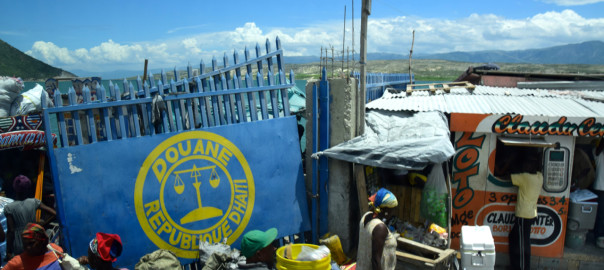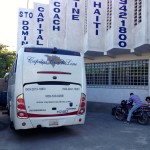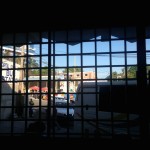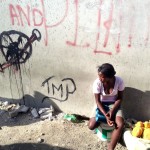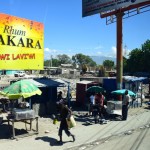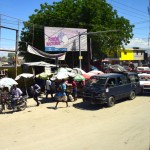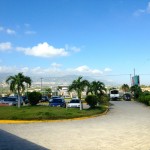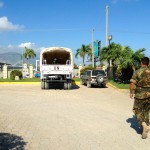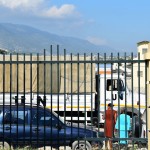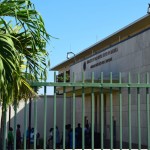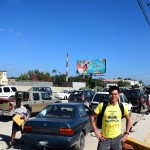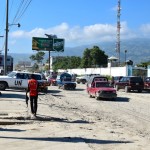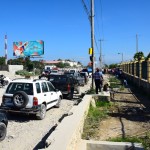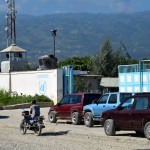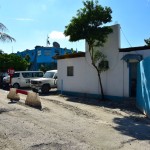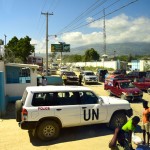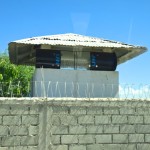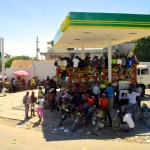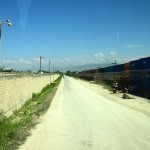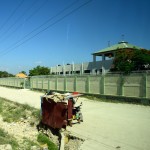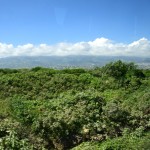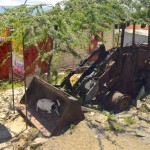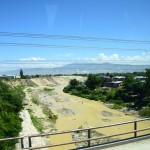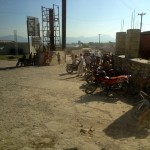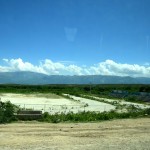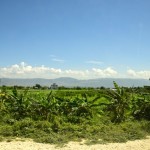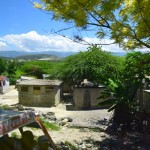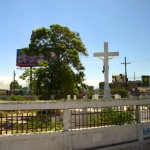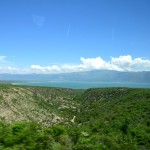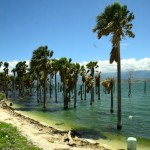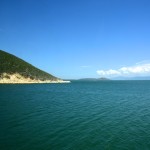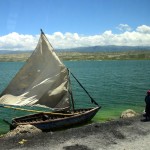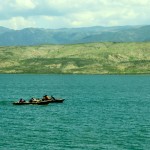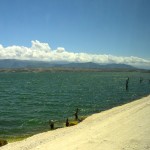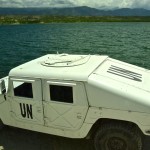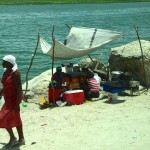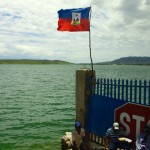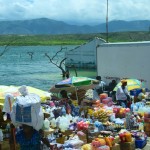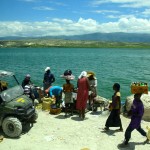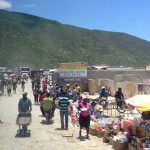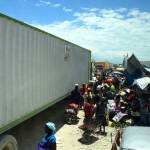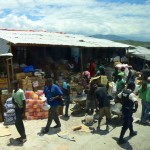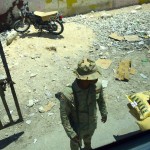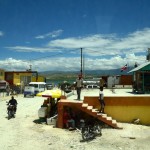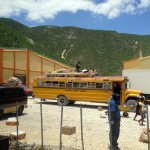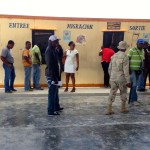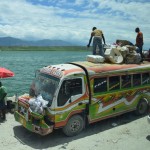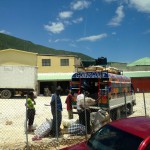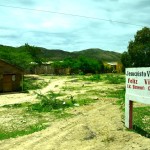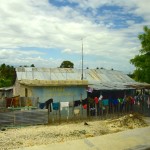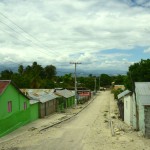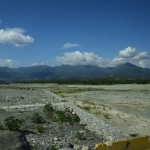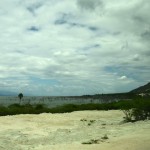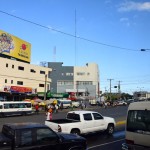A bus trip from Port-au-Prince, Haiti to Santo Domingo, Dominican Republic with Coach from the trip Grand Caribbean: Cuba, the Dominican Republic and Haiti.
Not too many people travel to the Dominican Republic from Haiti by bus. This is due to the fact that most people would fly and that land travel in Haiti is still not generally recommended. My visit of Port-au-Prince can confirm that the country is still in major need of rebuilding, infrastructure, and development.
But what can one see of the true Haiti from the air?
After some research I found that it is possible to travel from capital to capital of the neighboring countries on either an international bus or by car under the protection of a private security company. Bus seemed safe enough and much more adventurous.
Capital Coach Line offers this international service and even has a website where you can pre buy tickets, which was a bit pointless because you still need to go to the actual office to pick up your ticket. My friend and I picked up our tickets the day before our departure.
The bus leaves from the Petion-Ville office at 8 a.m., meaning we had to be up by 5:30 a.m. to get ready, have some breakfast and check out of our hotel, the Best Western Premier Petion-Ville.
A five minute taxi ride to the bus station was $20. I feel prices are quite inflated because only visitors take taxis. And as walking doesn’t seem to be an option due to safety, you end up paying the premium.
At the office we checked in with our receipts and got our boarding passes. The office is inside a small gated parking lot where the bus sat idly.
Once you board the bus, you are ferried to the main station located right next to the US embassy and UN compounds. The large lot was well protected with shotgun wielding security guards, not to mention the traffic jam of UN military and police vehicles.
At the large station which only services Capital Coach Line you fill out an immigration exit form and get your passports stamped out by an onsite Haitian immigration officer. The process was fast since there was only a handful of passengers.
We had an hour before the bus was to depart, so we wandered out of the gate to witness the scene. The guard tower of the UN compound across the street looked menacingly down at us, a traffic jam of white UN jeeps, Hummers, trucks and unmarked cars creeped along while Haitians crowded in a massive line in front of the US Embassy.
The high security US Embassy was one of the best buildings I saw in Haiti. Across the street they were constructing another embassy that looked to be the size of a megamall. Why does the US needs such huge embassy buildings while the Haitian government buildings lay in rubble?
The entire scene was quite depressing and when some unsavory characters started crowding around us, we decided to head back into the safety of the bus compound.
We soon boarded and were on our way to the border!
The actual bus was quite comfortable and clean with decent seats and even a TV playing the movie Frozen on loop. By the end of the journey everyone including the Haitians must have been able to sing the entire Frozen soundtrack.
I anxiously peered out the window to take in as much of the scene as I could. The outskirts of the city were large humanitarian compounds with guard towers and stacks of shipping containers piled up like a wall. The roads were mostly empty besides the occasional UN truck.
As we left the city, the landscape turned a lush green dotted with concrete buildings and sheet metal huts. The rural countryside showcased the natural beauty of the Caribbean country. Impoverished villages occasionally lined the side of the road with children chasing each other barefoot and laughing. As poor as the villages were, communal life there seemed happier and less chaotic than the crowded city.
The route eventually took us to Etang Saumâtre, Haiti’s largest lake and the second largest on Hispaniola. We followed a small winding dirt road around the lake all the way to the border. Boys sailed small boats around the lake while vendors had all sorts of items laid out on tarps adjacent to the broken border gate.
On the Haiti side we didn’t stop for immigration except to drop off the immigration officer hitching a ride.
On the Dominican Republic side it was a mess. The road was a chaotic mix of trucks and buses full of people, baggage, and cargo intertwined with a crowd of people on foot peddling wares and trying to cross the border. Soldiers armed with assault rifles and police kept control of the area.
Our bus pulled off the main road and parked near the immigration arrivals window. Hawkers crowded our exit to sell all sorts of products.
With our luggage we lined up at the “entrada” as an unarmed soldier kept hawkers at bay.
Once we had our entry stamp, we lined up for a frivolous luggage check and then boarded the bus. And with that, we were out of Haiti and into the Dominican Republic.
Then rest of journey was very straight forward as the roads were paved and the towns were quite developed. The contrast was huge across the border was huge. The closer we got to the capital the more developed and modern it became.
We arrived at the Santo Domingo bus station, got our bags and found taxis waiting to take us to our hotel.
The entire bus ride was quite comfortable, safe, and provided a unique way to see Haiti from the ground.
